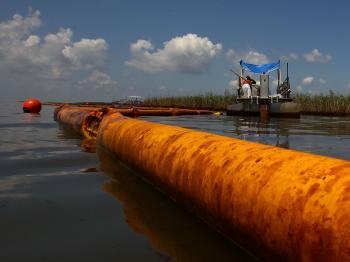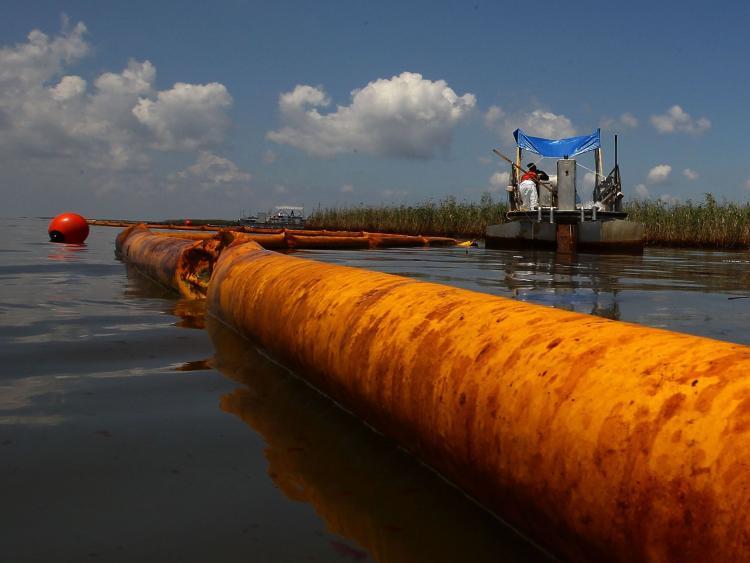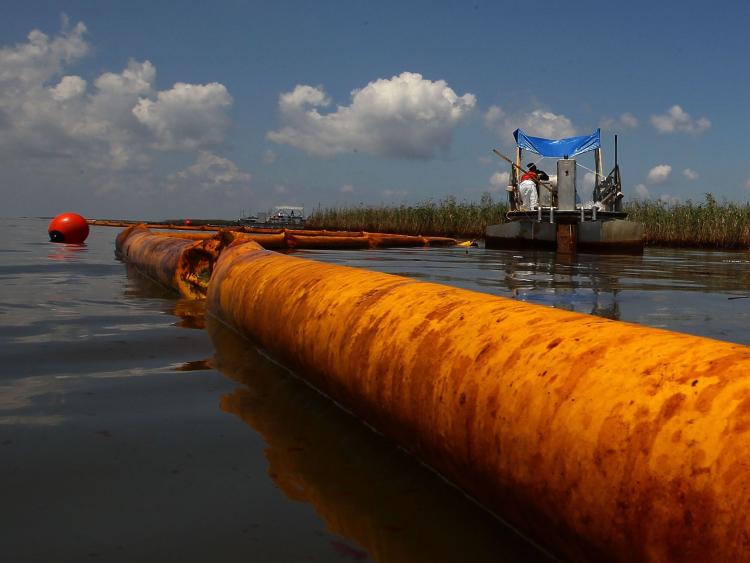BP and U.S. government crews are focused on the Gulf oil spill cleanup, dealing with the millions of gallons of oil currently spewing into the Gulf of Mexico. In addition to the attempts to contain the oil spill at the subsurface, tools such as oil containment booms are being utilized at the surface.
Oil spill cleanup efforts have at the time of writing utilized over 2 million feet (610 km) of containment boom at the surface to prevent the oil from moving further into the ocean.
These containment booms are tubular, bouy-like structures made of specific types of fabric, which float at the surface of the water and primarily work to stop the oil from spreading. Once the oil’s movement is halted, then methods such as skimming and controlled burning are used within the confines of the boom to eliminate the oil in the water.
“There are several types of containment booms. The one deployed most frequently is the hard boom, which is used for deeper waters, rougher conditions, and has longer links. ... This type of boom floats on the water and stops whatever is at the surface of the water from moving further,” a BP official who asked remain anonymous told The Epoch Times.
“When the conditions are less turbulent, soft or absorbent booms are deployed. This type of boom absorbs the oil but it is less effective because it becomes latent with the oil and has to be changed frequently,” said the BP official.
While absorbent booms do work to absorb some of the oil in the water, their primary purpose is still to merely confine the oil and stop it from progressing any further. To eliminate the oil in the water, skimming is employed for thicker patches of oil and burning for both thick patches and thinner sheens. Burning the oil has, according to various reports, resulted in air pollution, but this pollution has not been recognized by the EPA as seriously reducing the air quality.
When asked about the approximate cost of the 2 million feet of boom currently deployed in the gulf, the BP offical said, “I don’t think there is any way of knowing that.”
Containment booms are “coming from all over the country and all over the world,” through various different manufacturers, added the BP official. For these manufacturers, at least, the oil spill has had positive consequences, resulting increased business and revenues.






